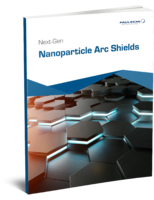LORD Corporation Scheduled to Present on a Variety of Topics at Upcoming International Elastomer Conference

Cary, N.C. – LORD Corporation – a leader in the development of adhesives, coatings, motion management devices, and sensing technologies – has announced a full schedule of presentations at the upcoming International Elastomer Conference.
To be held Oct. 10-13 at the David L. Lawrence Convention Center in Pittsburgh, Pa., the show is an annual event held by the Rubber Division of the ACS (American Chemical Society), an international association of chemists, engineers, technicians, scientists, plant managers, sales and marketing professionals as well as others in the rubber, polymer or related fields within industry, academia and government.
LORD will be showcasing new bonding solutions at booth 934; including solvent-free Chemlok® Film Adhesives for rubber lining; LORD® LokRelease™ Mold Release agents for fast, easy part removal from molds; In-Mold Bond Adhesives for assembling between plastics, silicones and metals during the molding process; and lead-free Chemlok® Adhesives in environmentally-safe solvent, low-HAPs, and aqueous formulations.
The following talks will also be given by LORD scientists at the show:
Low Mold-Fouling Adhesive: Features and Bond Performance (Oct. 12, 4:15 p.m.)
Emmanuel Pitia, Ph.D., Senior Scientist, Elastomer Adhesive and Coating Technology, LORD, will demonstrate the benefits, features and bond performance of Chemlok 6270 adhesive -- a low mold-fouling rubber-to-substrate adhesive that also offers improved prebake and environmental resistance when used with an appropriate primer. It improves productivity and efficiency by reducing down time, mold cleaning costs and scrap. Chemlok 6270 adhesive can be used in the manufacture of seals, gaskets, bushings, mounts, industrial tires, rolls and rollers, as well as seismic and bridge bearing pads. When used in combination with Chemlok primer, Chemlok 6270 adhesive bonds a variety of rubbers including natural rubber and nitrile to multiple substrates including aluminum, brass and grit blasted or zinc phosphatized steel.
Pita’s role at LORD involves formulating rubber-to-substrate adhesives and coatings. He obtained his Ph.D. in polymer engineering from the University of Akron and a bachelor in chemical engineering from University of New Hampshire.
Film Adhesives for Improving Safety and Reducing Cost in Tank Linking Applications (Oct. 13, 3:15 p.m.)Â
Andrew Heidenreich, Ph.D., Senior Scientist, Elastomer Adhesives and Coatings Technology Group, LORD, will discuss Chemlok film adhesives for bonding unvulcanized rubber to metal, specifically for tank lining applications, which eliminates the need for solvent-borne adhesives and tack cements. This high-tack, 100-percent-solids system cures with the elastomer during standard open steam and autoclave cure processes. Pre-laminating the film onto the uncured rubber sheet (before application to metal) greatly simplifies this traditionally labor-intensive process by eliminating the need for application and drying of up to four coats of wet adhesive and tack cement. Traditional wet adhesive systems release 35-to-50-pounds of Volatile Organic Compounds (VOCs) for every 1000-square feet of rubber-lining. Worker safety is also improved by eliminating the risk of explosion and asphyxiation associated with applying a solvent-borne adhesive in an enclosed environment. Chemlok film adhesives have high-tack strength to hold the rubber liner in place once applied, and do so over a wide range of application temperatures, yet can be repositioned. Once applied to the metal substrate, elastomers can be stitched and worked in the standard fashion. After curing, a robust, 100-percent rubber tearing bond, with excellent chemical resistance, is achieved to a variety of elastomers. This white paper will introduce Chemlok film adhesives. Development, application, and benefits will be explained.
Heidenreich received his B.S. in Polymer Science from the University of Southern Mississippi. During graduate school at the University of Akron, Heidenreich was the recipient of the LORD Fellowship and the Goodyear Fellowship. He was granted a Ph.D. in Polymer Science under the guidance of Judit Puskas.
A Comparison of Two Different Cure Systems on the Age-Stiffening and Fatigue Crack Growth Characteristics in Natural Rubber and Polybutadiene
Oct. 13, 11:15 a.m.
James R. Halladay, Senior Fellow at LORD, will discuss natural rubber (NR) and polybutadiene (BR) elastomers used in the manufacture of many vibration isolation devices in rotorcraft, including high-capacity laminate (HCL) rotor bearings and Fluidlastic™ blade dampers. Previously published investigations have shown that all conventionally-formulated NR and BR elastomers stiffen significantly over time during storage at ambient conditions and even more rapidly at elevated temperatures. At room temperature, increases in the elastic shear modulus G’ of 8- to 12-percent in six months is not out of the ordinary for a typical NR/BR blend, and the increase in stiffening continues for years. A proprietary chemistry that significantly reduces the magnitude of age-stiffening has been discovered. Although the specific chemistry is not disclosed, the data demonstrates that it is possible to greatly reduce both shelf age-stiffening and stiffening due to heat ageing associated with a conventional sulfur cure system. Fatigue Crack Propagation (FCP) testing was used to determine how crack growth behavior of rubber compounds changes after both ambient and high temperature aging.
Halladay has more than 40 years of experience in the rubber industry. In 1981, he joined LORD and is currently a Senior Technology Fellow specializing compound and process development in both organic rubber and silicone elastomers. His experience includes both aerospace and industrial applications. He has authored or co-authored over 30 technical papers and holds seventeen US patents relating to coatings, adhesives, and elastomer formulations.
In addition to the aforementioned lectures, LORD is hosting a series of short talks at the show, held in the LORD Conference Room #328. Seating is limited to 25 people per talk. To reserve your seat, please email Kimberly Richardson (Kimberly_Richardson@lord.com).
High Performance Coatings High Reflective Coatings by Frank Krakowski, LORD Fellow, Oct. 11 at 10:30 am
Antiozonants and Their Effects on Adhesion by Halladay, Oct. 12 at 10:30 a.m.
Lead-Free Chemlok Solutions by Dave Pugne, Global Product Manager, Oct. 13 at 10:30 a.m.
For more information, call us at +1 877 ASK LORD (275 5673), email us at Customer.Support@lord.com or visit us on the web at LORD.com.
About LORD Corporation
LORD Corporation is a diversified technology and manufacturing company developing highly reliable adhesives, coatings, motion management devices, and sensing technologies that significantly reduce risk and improve product performance. For more than 90 years, LORD has worked in collaboration with our customers to provide innovative oil and gas, aerospace, defense, automotive and industrial solutions. With world headquarters in Cary, N.C., LORD has approximately 3,100 employees in 26 countries and operates 19 manufacturing facilities and 10 R&D centers worldwide. LORD actively promotes STEM education and many other community engagement initiatives. For more information, visit http://www.lord.com.Â




